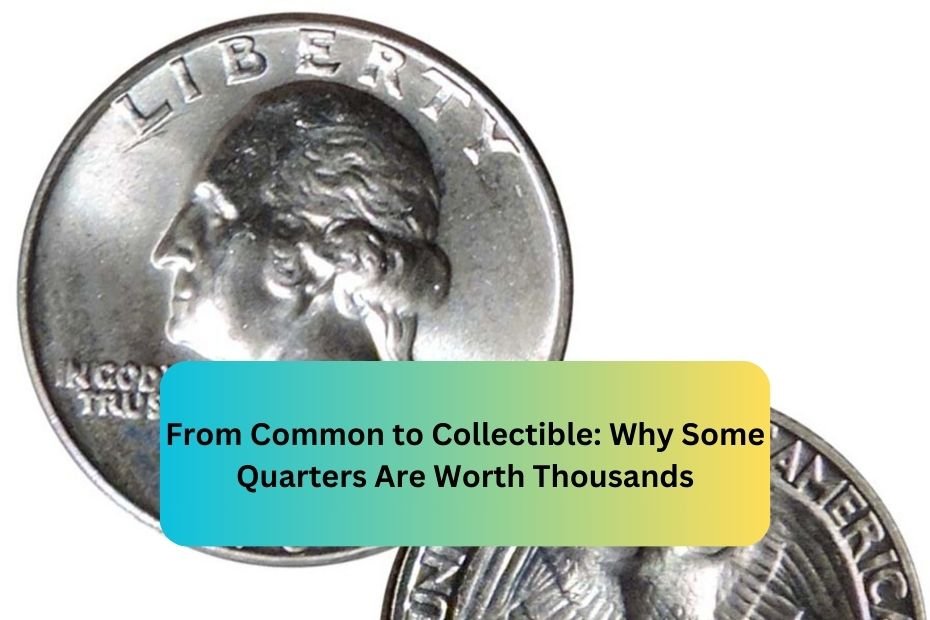Quarters are one of the most commonly circulated coins in the United States, but not all quarters are created equal. While many quarters may appear identical, some hold significant value in the numismatic world, fetching thousands of dollars at auction. This article will explore the reasons behind the value of certain quarters, the features that make them collectible, and tips for spotting potential treasures in your pocket change.
The Basics of Quarters
The quarter has been a staple of American currency since its introduction in 1796. Initially minted in silver, the composition of quarters changed over the years, with the introduction of copper-nickel blends in the 1960s. Quarters are minted in various designs, including the Washington quarter, state quarters, and commemorative issues, each with its own unique characteristics.
The Washington Quarter
The Washington quarter, featuring George Washington on the obverse and an eagle on the reverse, was first issued in 1932 to commemorate the 200th anniversary of Washington’s birth. The design was initially minted in 90% silver until 1965 when the U.S. Mint switched to a copper-nickel composition. While most Washington quarters are common and hold little value beyond their face value, certain varieties and conditions can make them highly collectible.
The State Quarters Program
In 1999, the U.S. Mint launched the 50 State Quarters Program, which introduced a unique design for each state, released in the order they ratified the Constitution. This program sparked widespread interest in coin collecting, and some state quarters, particularly those with errors or limited mintage, can be worth significantly more than their face value.
Factors That Determine a Quarter’s Value
Several factors contribute to the value of a quarter, including rarity, condition, demand, and historical significance. Let’s break these down further:
1. Rarity
Rarity is perhaps the most significant factor in determining a coin’s value. Coins that were produced in limited quantities or those that had a brief minting period tend to be more valuable. For example, the 1932-S Washington quarter, minted in San Francisco, is highly sought after because only about 408,000 were produced, making it one of the rarest quarters.
2. Condition
The condition of a coin is graded on a scale from poor to mint state, with coins in better condition generally fetching higher prices. Coins with minimal wear, scratches, or blemishes are more desirable. Collectors use a grading scale that includes categories such as Fine (F), Very Fine (VF), Extremely Fine (EF), and Mint State (MS). Coins graded MS-65 and above can command premium prices.
3. Demand
The demand for certain quarters can fluctuate based on trends in the numismatic community. Certain designs, like the 2004 Wisconsin quarter with an extra leaf, are highly sought after due to their unique features and the excitement surrounding them. Additionally, the popularity of coin collecting can impact prices, as collectors may be willing to pay a premium for coins that are currently trending.
4. Historical Significance
Some quarters may have historical significance that adds to their value. Coins commemorating important events, figures, or anniversaries can be more valuable than ordinary coins. For example, the 1976 Bicentennial quarters feature a unique design celebrating America’s 200th anniversary, and while they are not rare, they hold nostalgic value for many collectors.
Notable Examples of Valuable Quarters
- 1932-S Washington Quarter
- Value: Up to $20,000 or more in high grades.
- Rarity: Only 408,000 minted.
- 2004 Wisconsin State Quarter (Extra Leaf)
- Value: Up to $1,000 or more for those in mint condition.
- Rarity: An error coin due to a design mistake, making it highly sought after.
- 1964 Washington Quarter
- Value: Up to $10 in circulated condition; can go higher for uncirculated examples.
- Rarity: The last year of silver quarters, making it more collectible.
- 1999 Delaware State Quarter (Spitting Horse)
- Value: Up to $1,000 depending on the condition.
- Rarity: An error coin with a distinct flaw in the design.
- 1896-S Barber Quarter
- Value: Can exceed $2,500 in higher grades.
- Rarity: A key date in the Barber series, known for its low mintage.
Tips for Spotting Valuable Quarters
If you’re interested in exploring the world of quarter collecting, here are some tips to help you spot potentially valuable coins:
- Inspect Your Change: Regularly check your pocket change for any older quarters, especially those minted before 1965, which may contain silver.
- Look for Errors: Be aware of error coins, such as those with double dies, misprints, or unique features that make them collectible.
- Research: Familiarize yourself with the specific quarters and their values. Numismatic catalogs and online resources can provide valuable information on rarity and demand.
- Join a Community: Engaging with other collectors can provide insights into the latest trends, valuable finds, and tips on caring for your collection.
- Get Your Coins Appraised: If you believe you have a valuable quarter, consider having it appraised by a professional numismatist to determine its worth accurately.
Conclusion
Quarters may seem like ordinary coins, but some can be worth thousands of dollars due to their rarity, condition, demand, and historical significance. By understanding what makes certain quarters collectible, you can enhance your appreciation for these pieces of currency and possibly even discover hidden treasures in your change. Whether you’re a seasoned collector or just starting, the world of quarters offers endless opportunities for exploration and discovery.
FAQs
- What is the most valuable quarter ever sold?
The most valuable quarter ever sold is the 1804 Draped Bust quarter, which fetched over $2 million at auction. However, this is an extremely rare exception. - How can I tell if a quarter is silver?
Quarters minted before 1965 are made of 90% silver. You can check the date and look for the “coin silver” hallmark or test the weight to determine if it’s silver. - Are all state quarters worth more than 25 cents?
No, most state quarters are worth face value, but certain error coins and specific mintages can be worth significantly more. - What is the best way to store collectible quarters?
Store them in a cool, dry place, preferably in coin holders, sleeves, or albums designed for coin storage to prevent damage. - Can I sell my quarters for a profit?
Yes, if you have rare or collectible quarters, you can sell them for a profit through online auctions, coin shows, or numismatic dealers. Always get an appraisal to understand their value.

